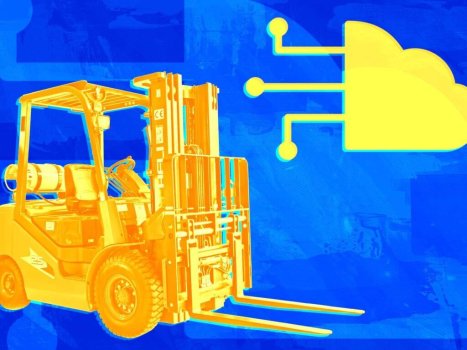K
Kathleen Martin
Guest
Whatever happened to our fourth industrial revolution? A combination of IoT, cloud computing, and big data analytics promised higher productivity, predictive maintenance, and end-to-end process automation for all industrial operators. And while these benefits are appearing in fits and starts, we have yet to introduce a holistic reimagining of processes and systems – the ultimate promise of Industry 4.0.
There’s one major reason Industry 4.0 is off to a rocky start: IoT solutions remain siloed, monolithic, each trapped in its own narrow area of functionality. Maybe that was inevitable, given the organic, ad hoc nature of the market, but it’s ironic given that connectivity is one of the key values of IoT and Industry 4.0 writ large.
The fact is, siloed IoT solutions are hampering innovation. Luckily, new system architectures are offering distributed data collection, storage, and processing – along with a localized and secure central hub. If Industry 4.0 is broken, these edge-to-cloud platforms are the fix.
How Far Edge Computing Unifies Industrial IoT
Most industrial IoT offerings are full-stack solutions: They include sensors or devices, data storage, cloud applications, and, finally, the dashboard or user interface. Users don’t have control of the data that flows through the stack; they don’t even own the data, which typically belongs to the IoT manufacturer.
When you have a different full-stack IoT solution for every function of your business, the IT architecture becomes a nightmare to use, let alone maintain: You’ve got dozens of dashboards. You have to update devices on-site. There’s no communication between systems. The pace of innovation becomes too slow.
What’s missing is a system with distributed storage and processing. Edge computing is a start, but it takes a far edge platform to fully realize this vision.
In an edge computing architecture, data storage occurs close to the source (usually the sensor or device). Far edge computing takes this distributed approach a step further, processing data where it’s collected, i.e., on or near the devices that do the data collection.
Far edge computing allows you to both collect and process data that wasn’t previously available. Or, if it was previously available, there was so much of it that it caused storage problems in the cloud – problems that distributed, local-cloud storage can solve.
Continue reading: https://www.iotforall.com/the-problem-with-industry-4-0-and-a-solution
There’s one major reason Industry 4.0 is off to a rocky start: IoT solutions remain siloed, monolithic, each trapped in its own narrow area of functionality. Maybe that was inevitable, given the organic, ad hoc nature of the market, but it’s ironic given that connectivity is one of the key values of IoT and Industry 4.0 writ large.
The fact is, siloed IoT solutions are hampering innovation. Luckily, new system architectures are offering distributed data collection, storage, and processing – along with a localized and secure central hub. If Industry 4.0 is broken, these edge-to-cloud platforms are the fix.
How Far Edge Computing Unifies Industrial IoT
Most industrial IoT offerings are full-stack solutions: They include sensors or devices, data storage, cloud applications, and, finally, the dashboard or user interface. Users don’t have control of the data that flows through the stack; they don’t even own the data, which typically belongs to the IoT manufacturer.
When you have a different full-stack IoT solution for every function of your business, the IT architecture becomes a nightmare to use, let alone maintain: You’ve got dozens of dashboards. You have to update devices on-site. There’s no communication between systems. The pace of innovation becomes too slow.
What’s missing is a system with distributed storage and processing. Edge computing is a start, but it takes a far edge platform to fully realize this vision.
In an edge computing architecture, data storage occurs close to the source (usually the sensor or device). Far edge computing takes this distributed approach a step further, processing data where it’s collected, i.e., on or near the devices that do the data collection.
Far edge computing allows you to both collect and process data that wasn’t previously available. Or, if it was previously available, there was so much of it that it caused storage problems in the cloud – problems that distributed, local-cloud storage can solve.
Continue reading: https://www.iotforall.com/the-problem-with-industry-4-0-and-a-solution

